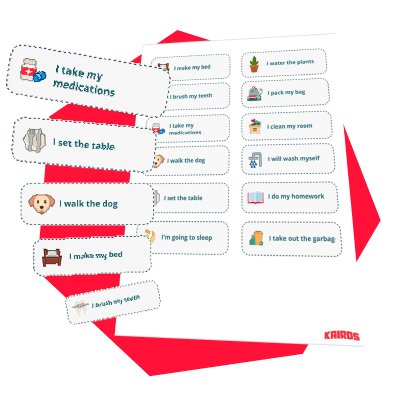Balancing screen time: Strategies for children with ADHD
In today's digital age, managing screen time is a challenge for many parents, especially for those with children diagnosed with ADHD. Excessive screen time can exacerbate symptoms of ADHD, such as attention difficulties and hyperactivity. However, when used wisely, digital devices can also serve as educational tools and sources of entertainment. This blog explores strategies to help parents balance screen time for their children with ADHD, promoting a healthier and more productive relationship with technology.
Understanding the impact of screen time on children with ADHD
Before delving into strategies, it's crucial to understand how screen time affects children with ADHD. Prolonged use of digital devices can lead to:
- Increased Hyperactivity and Impulsivity: Continuous exposure to fast-paced media can heighten hyperactive and impulsive behaviors.
- Attention Difficulties: Children with ADHD may struggle to shift their focus from screens to other tasks, leading to decreased attention span and concentration in non-digital activities.
- Sleep Disruptions: Blue light emitted by screens can interfere with sleep patterns, exacerbating symptoms of ADHD.
Establishing clear screen time guidelines
Setting clear and consistent screen time guidelines helps create structure and prevents conflicts. Here’s how you can establish effective guidelines:
Set Daily Limits: The American Academy of Pediatrics recommends no more than one hour of screen time per day for children aged 2 to 5 years, and consistent limits for older children. Customize these recommendations to suit your child's needs, considering their daily activities and schoolwork.
Create a Schedule: Develop a daily schedule that includes specific times for screen use. Incorporate screen time into the daily routine, balancing it with physical activities, homework, and family time.
Define Screen-Free Zones and Times: Designate certain areas in your home, such as the dining room and bedrooms, as screen-free zones. Establish screen-free times, such as during meals and before bedtime, to encourage face-to-face interactions and ensure a good night’s sleep.
Encouraging educational and interactive screen time
While limiting screen time is important, it's equally essential to ensure that the time spent on screens is educational and interactive. Here are some ways to make screen time more beneficial:
Choose High-Quality Content: Select apps, games, and programs that are educational and promote learning. Platforms like Kairos offer a range of interactive and educational content.
Interactive Engagement: Encourage your child to use apps that require active participation, such as drawing, coding, or problem-solving games. These activities can enhance cognitive skills and reduce passive consumption of media.
Co-Viewing and Co-Playing: Spend time with your child during their screen time. Co-viewing educational videos or co-playing interactive games can enhance their learning experience and provide opportunities for bonding.
Balancing screen time with physical activities
Physical activities are crucial for the development and well-being of children with ADHD. Balancing screen time with physical activities can help manage ADHD symptoms and promote overall health.
Incorporate Physical Exercise: Ensure your child engages in at least one hour of physical activity each day. Activities such as biking, swimming, or playing sports can help reduce hyperactivity and improve focus.
Outdoor Play: Encourage outdoor play as much as possible. Nature walks, park visits, and playground activities provide a healthy balance to screen time and offer sensory stimulation that can be beneficial for children with ADHD. Incorporating outdoor activities into your child's routine not only supports physical well-being but also provides an opportunity for family bonding. Tools like the family GPS location monitoring from iSharing can help ensure your child’s safety during outdoor adventures, allowing parents to monitor their location in real time while giving them the freedom to explore independently.
Promoting healthy sleep habits
Healthy sleep habits are vital for managing ADHD symptoms. Here are some strategies to ensure that screen time does not interfere with your child’s sleep:
Screen-Free Bedtime Routine: Establish a calming, screen-free bedtime routine at least one hour before sleep. Activities like reading, listening to music, or taking a warm bath can help your child unwind.
Limit Blue Light Exposure: Reduce exposure to screens that emit blue light in the evening. Consider using blue light filters on devices or providing your child with blue light blocking glasses.
Consistent Sleep Schedule: Maintain a consistent sleep schedule, ensuring your child goes to bed and wakes up at the same time every day. A regular sleep routine helps regulate their internal clock and improve sleep quality.
Engaging in open communication
Open communication about screen time is essential for setting expectations and addressing any concerns. Here’s how to foster a healthy dialogue:
Discuss the Guidelines: Involve your child in setting screen time guidelines. Explain the reasons behind the rules and how they can benefit from a balanced approach to screen time.
Monitor and Adjust: Regularly monitor your child’s screen time and observe their behavior and mood. Be flexible and willing to adjust the guidelines as needed to find the right balance.
Encourage Feedback: Encourage your child to share their feelings about the screen time rules. Listening to their perspective can help you address any issues and make them feel heard.
Conclusion
Balancing screen time for children with ADHD is a continuous process that requires clear guidelines, engaging activities, and open communication. By understanding the impact of screen time, establishing structured routines, and promoting physical activities and healthy sleep habits, parents can help their children develop a positive relationship with technology. Remember, the goal is to create a balanced and healthy environment that supports your child's growth and well-being.
For additional tips and tools, consider exploring Kairos’ routine guide.
